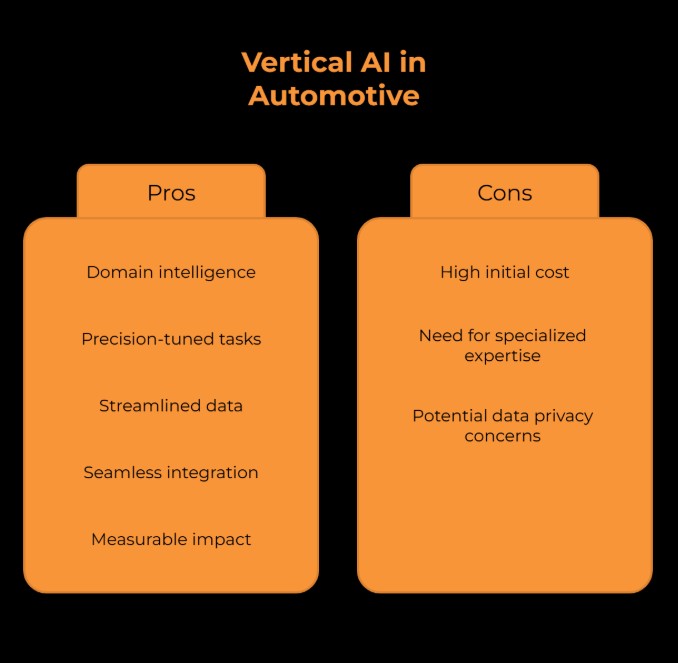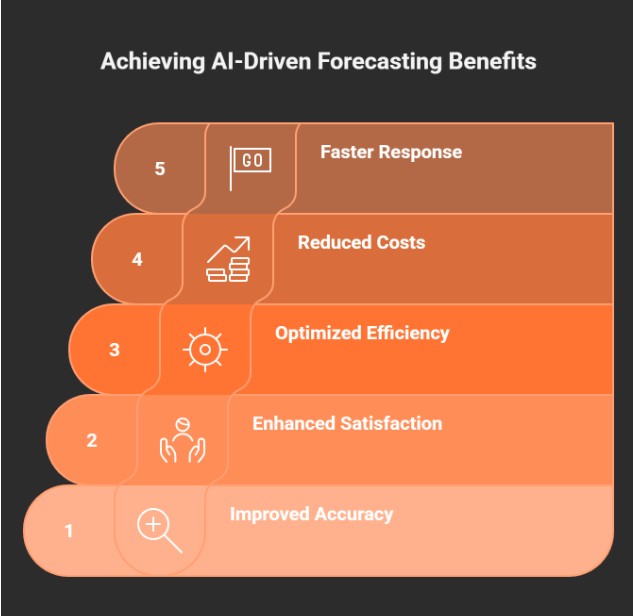In today’s fast-evolving automotive landscape, the real differentiator isn’t production speed, it’s perception. Success now depends on understanding what customers truly want to buy, not just what manufacturers believe they should build.
For one leading automotive giant, the challenge wasn’t just about building great vehicles; it was about building the right vehicles in the right quantities at the right time.
Traditional methods, depending on historical sales data and manual surveys, simply seemed inadequate for recognizing the subtle whims of the customers.
The solution was a sophisticated AI-based forecasting system that changed the entire approach to demand planning and product mix optimization seen in the company.
Use Case: Real-time Product Mix Insights for Smarter Forecasting
https://www.youtube.com/watch?v=0fVeejuHpGo
The Challenge: Beyond Traditional Market Research
In the past, traditional car demand prediction used lots of past sales figures, information from dealers, and occasional market surveys as the main data sources. Despite this, these approaches frequently provided only a partial insight into the consumers’ day-to-day preferences. Some of the automaker’s problems were:
- Limited visibility into real-time customer preferences across different vehicle configurations
- Fragmented data sources from surveys, dealerships, and online platforms
- Manual processes that couldn’t keep pace with rapidly changing consumer behavior
- Regional variations in product preferences that weren’t captured effectively
The company needed a more sophisticated approach to understand not just how many vehicles customers wanted, but which specific product configurations would resonate with different market segments.
Understanding Product Mix in the Automotive Context
Product Mix in the automotive industry refers to the range and distribution of several vehicle models, trim levels, options, and setups a manufacturer creates and markets. From engine types and transmission options to internal materials and technological packages, this covers everything. It is important to find the right product mix because:
- It directly impacts inventory costs and production efficiency
- It affects customer satisfaction and brand perception
- It influences pricing strategies and profit margins
- It determines competitive positioning in various market segments
For automotive manufacturers, an optimal product mix means producing exactly what customers want to buy, in the right quantities, at the right time.
The AI Solution: Customer Value Insights Agent
The automotive giant partnered with data analytics experts to develop a comprehensive Customer Value Insights Agent—an AI-powered system that could analyze consumer buying behavior at an unprecedented level of detail.
Data Integration and Sources
The solution integrated multiple data streams to create a holistic view of customer preferences:
- Direct cloud data sources from the company’s digital platforms
- Survey data from traditional market research
- Online behavioral data from customer interactions
- Regional market intelligence from various geographical locations
Machine Learning Architecture
Using advanced machine learning libraries, the system was designed to:
- Process vast amounts of structured and unstructured customer data
- Identify patterns in buying behavior across different demographics
- Predict product preferences by age group, region, and other key variables
- Generate actionable insights for demand planning teams
Implementation and Results
Granular Demand Analysis
The AI system enabled demand planners to understand customer preferences at a granular level, revealing insights such as:
- Age-specific preferences: Younger buyers gravitating toward technology-heavy configurations
- Regional variations: Different markets showing distinct preferences for engine types and features
- Seasonal patterns: How customer preferences shifted throughout the year
- Cross-segment insights: How preferences in one vehicle category influenced others
Enhanced Forecasting Accuracy
With these detailed insights, the company’s forecasting process transformed from reactive to predictive. Demand planners could now:
- Forecast demand for specific product configurations rather than just overall vehicle volumes
- Adjust production schedules based on real-time preference shifts
- Optimize inventory allocation across different markets
- Reduce the risk of overproduction or stockouts
Customer-Centric Product Development
The discoveries shaped the next product development in addition to helping to forecast more correctly. Based on actual customer purchasing patterns, the business might now construct future car designs to guarantee that new goods meet real market demand rather than hypotheses or assumptions.
Why Vertical AI Wins in Automotive

While conventional AI systems can analyze data and spot trends, Vertical AI, that is customized particularly for the automotive industry offers better outcomes since it knows the particular complexity of automotive markets.
Key Advantages
- Built-in domain intelligence: Understanding automotive-specific data types, from vehicle configurations to seasonal buying patterns
- Precision-tuned for specific tasks: Optimized for automotive forecasting challenges rather than generic prediction models
- Smart, streamlined data flows: Designed to handle automotive industry data structures and integration requirements
- Seamless workflow integration: Built to work with existing automotive planning and production systems
Automotive Challenges Addressed
- High-frequency connected vehicle data: Modern vehicles generate massive amounts of data that require specialized processing
- Complex product configuration lifecycle: Automotive products have intricate option combinations that generic AI can’t effectively navigate
- Shifting user behavior with EVs & autonomy: The industry transformation requires AI that understands emerging automotive trends
Measurable Business Impact

The implementation of AI-powered forecasting delivered significant results:
- Improved demand planning accuracy by enabling predictions at the product configuration level
- Enhanced customer satisfaction by ensuring preferred vehicle configurations were available
- Optimized production efficiency through better alignment of manufacturing with actual demand
- Reduced inventory costs by minimizing overproduction of less-popular configurations
- Faster market response to changing consumer preferences
Ready to Align Your Product Mix With What Customers ACTUALLY Want?
The success of this automotive giant shows how AI-driven prediction can turn a reactive, assumption-based approach into a proactive, data-driven capacity in conventional demand planning. The company attained unmatched harmony between production and consumer demand by knowing precisely which configurations they favor, in addition to how many cars they want.
The main lesson is obvious: in the cut-throat automotive environment of today, success goes to those who can use cutting-edge AI skills together with conventional industry experience to really grasp and meet consumer needs.
Want to see it in action? Talk to our AI experts today!



